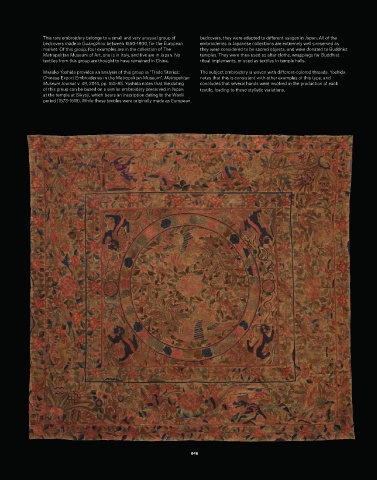Page 113 - 2021 March 18 to 19th, Important Chinese Works of Art, Christie's New York City
P. 113
This rare embroidery belongs to a small and very unusual group of bedcovers, they were adapted to different usages in Japan. All of the
bedcovers made in Guangzhou between 1550-1800, for the European embroideries in Japanese collections are extremely well-preserved as
market. Of this group, four examples are in the collection of The they were considered to be sacred objects, and were donated to Buddhist
Metropolitan Museum of Art, one is in Italy, and five are in Japan. No temples. They were then used as altar cloths, wrappings for Buddhist
textiles from this group are thought to have remained in China. ritual implements, or used as textiles in temple halls.
Masako Yoshida provides an analysis of this group in “Trade Stories: The subject embroidery is woven with different-colored threads. Yoshida
Chinese Export Embroideries in the Metropolitan Museum”, Metropolitan notes that this is consistent with other examples of this type, and
Museum Journal, v. 49, 2014, pp. 165-85. Yoshida notes that the dating concludes that several hands were involved in the production of each
of this group can be based on a similar embroidery preserved in Japan textile, leading to these stylistic variations.
at the temple at Sikyoji, which bears an inscription dating to the Wanli
period (1573-1619). While these textiles were originally made as European
846

